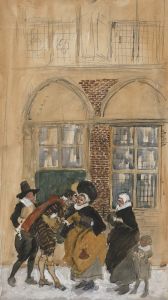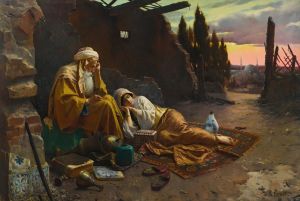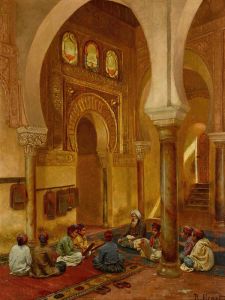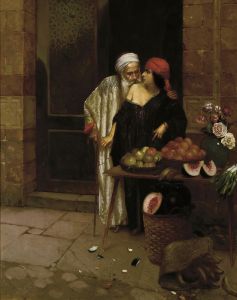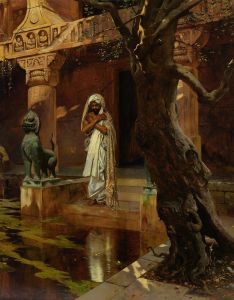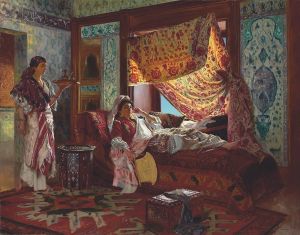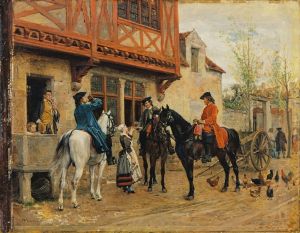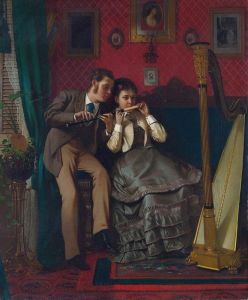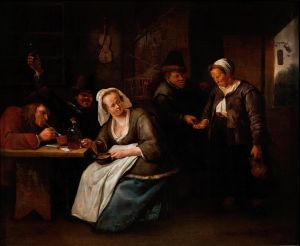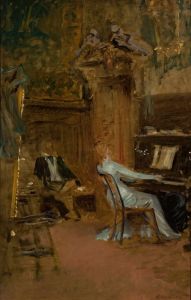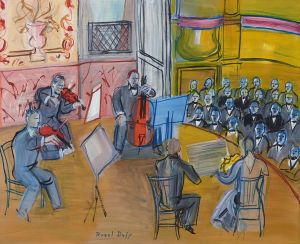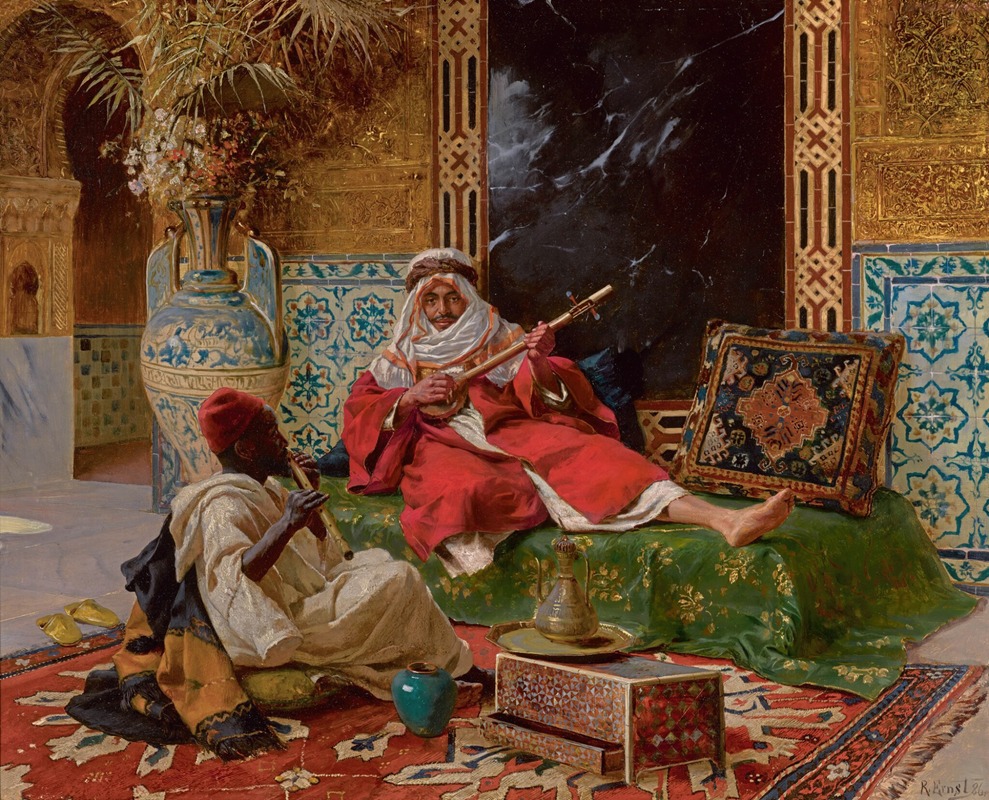
The Musicians
A hand-painted replica of Rudolf Ernst’s masterpiece The Musicians, meticulously crafted by professional artists to capture the true essence of the original. Each piece is created with museum-quality canvas and rare mineral pigments, carefully painted by experienced artists with delicate brushstrokes and rich, layered colors to perfectly recreate the texture of the original artwork. Unlike machine-printed reproductions, this hand-painted version brings the painting to life, infused with the artist’s emotions and skill in every stroke. Whether for personal collection or home decoration, it instantly elevates the artistic atmosphere of any space.
Rudolf Ernst was an Austrian painter known for his Orientalist works, which often depicted scenes inspired by the cultures and landscapes of the Middle East and North Africa. "The Musicians" is one of his notable paintings, showcasing his fascination with the exotic and his attention to detail.
Ernst was born in Vienna in 1854 and studied at the Academy of Fine Arts in Vienna. He later moved to Paris, where he became part of the Orientalist movement, a trend among Western artists who were captivated by the art, architecture, and customs of the East. This movement was characterized by its romanticized and often idealized portrayals of Eastern subjects.
"The Musicians" exemplifies Ernst's skill in capturing the intricate details and vibrant colors associated with Orientalist art. The painting typically features a group of musicians, often depicted in a richly decorated interior setting that reflects the opulence and luxury of the imagined Eastern world. Ernst's use of color and light, along with his meticulous attention to the textures of fabrics and architectural elements, creates a vivid and immersive scene.
In "The Musicians," Ernst's composition often includes traditional musical instruments, which are portrayed with great accuracy and care. These instruments might include the oud, a stringed instrument similar to a lute, and various types of percussion instruments. The musicians are usually dressed in elaborate costumes, with flowing robes and intricate patterns that highlight Ernst's interest in the decorative arts.
Ernst's work is characterized by its precision and the artist's ability to convey the atmosphere of the scene. His paintings often evoke a sense of tranquility and harmony, inviting the viewer to appreciate the beauty and craftsmanship of the depicted subjects. The attention to detail in "The Musicians" is evident in the rendering of the musicians' expressions and postures, which convey a sense of engagement and enjoyment in their performance.
While Ernst's work is celebrated for its aesthetic qualities, it is important to note that Orientalist art, including "The Musicians," has been critiqued for its portrayal of Eastern cultures through a Western lens. Critics argue that such works often reflect the biases and stereotypes of the time, rather than an accurate representation of the cultures they depict. Despite this, Ernst's paintings remain valuable for their artistic merit and their role in the history of 19th-century art.
Rudolf Ernst continued to paint until his death in 1932, leaving behind a legacy of works that capture the allure and mystique of the Orient as imagined by Western artists of his era. "The Musicians" stands as a testament to his skill and his contribution to the Orientalist movement, offering viewers a glimpse into the richly detailed and colorful world that fascinated so many artists of his time.





